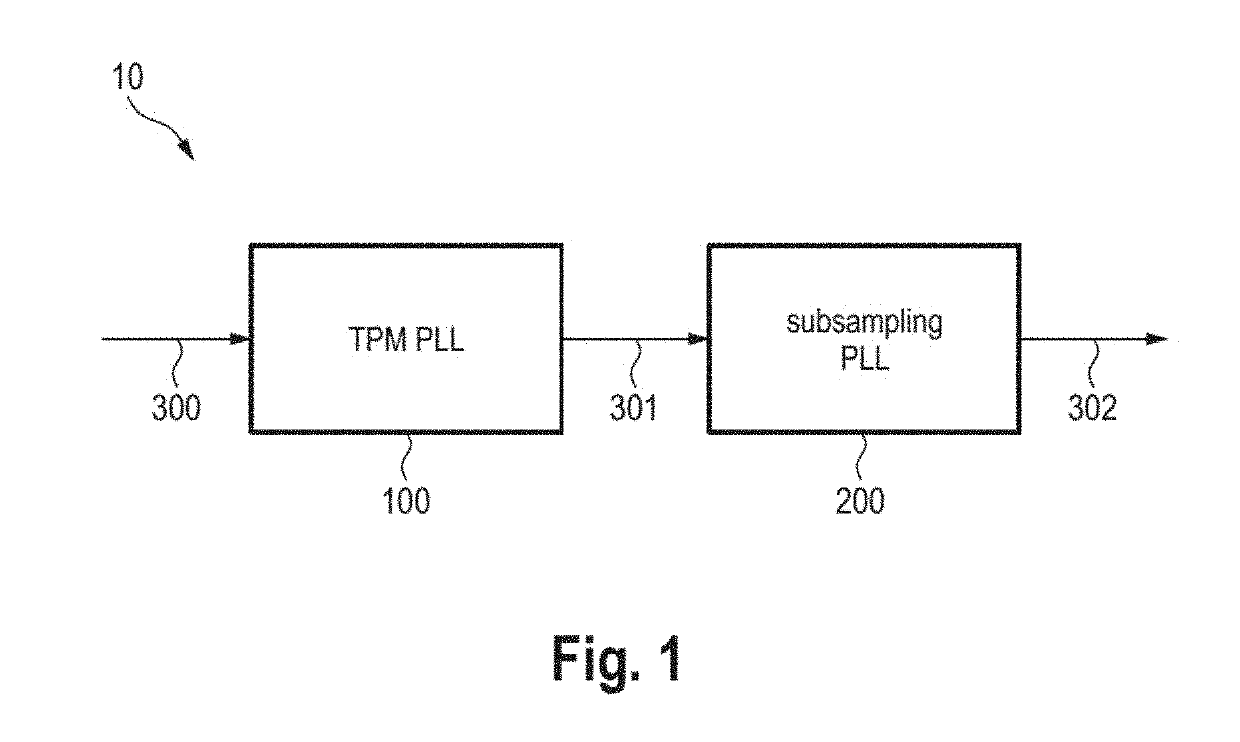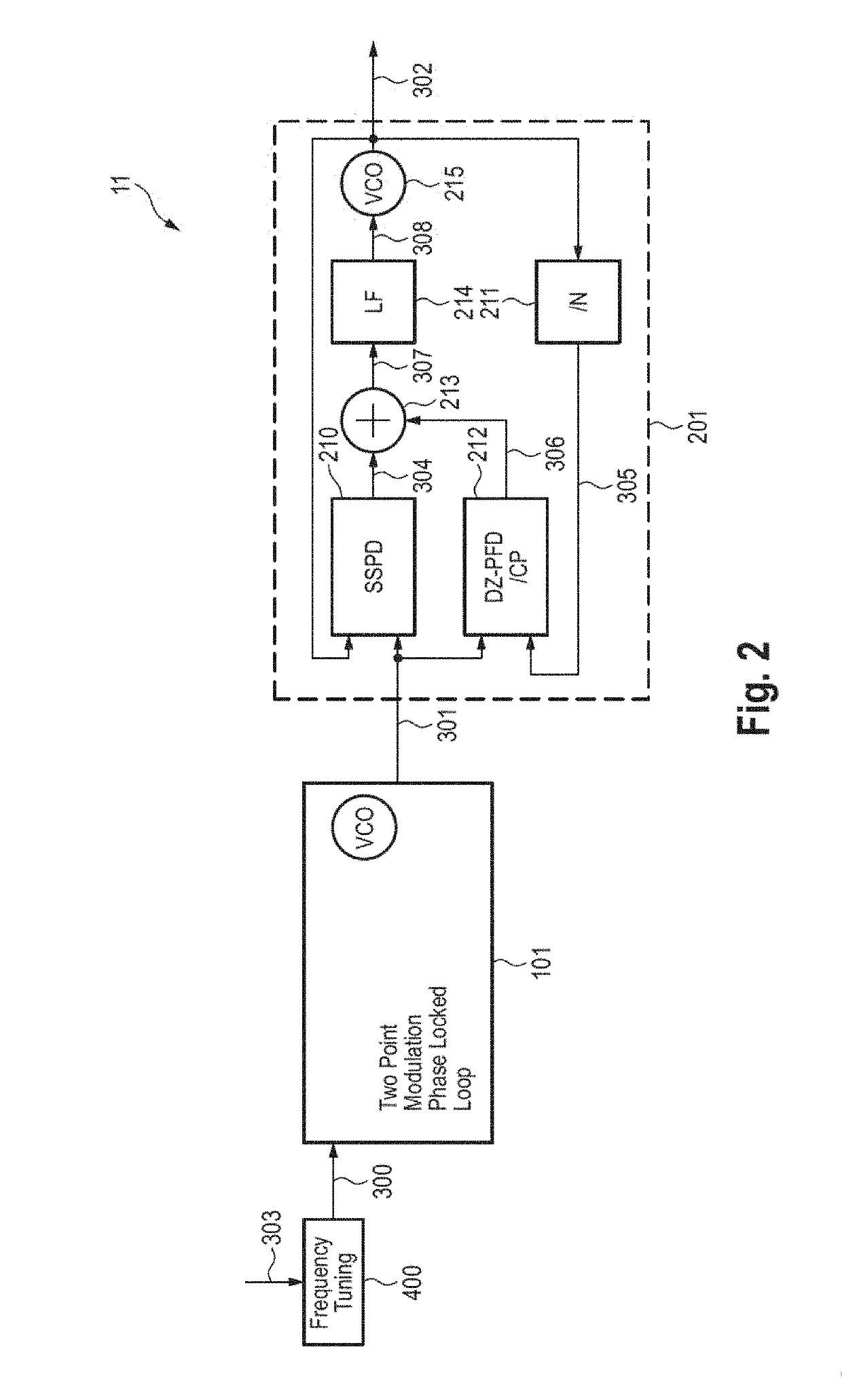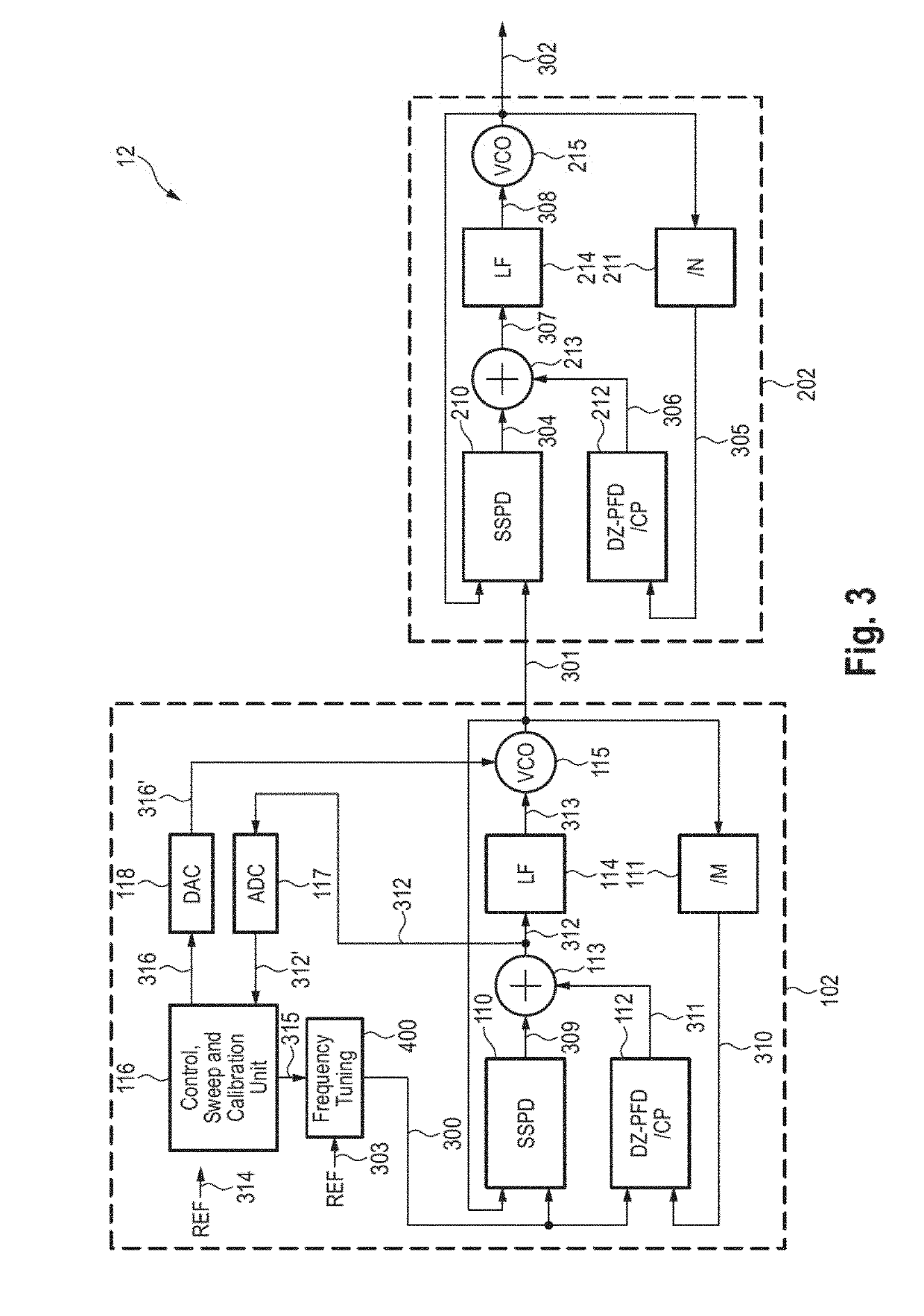Synthesizer and phase frequency detector
a phase frequency detector and synthesizer technology, applied in the direction of angle modulation, electrical apparatus, pulse automatic control, etc., can solve the problem that the two-point modulated phase locked loop can only approximate a linear frequency modulation with discrete frequency steps, and unwanted ghost targets in radar images, etc., to achieve the effect of limited phase detection range and high phase accuracy
- Summary
- Abstract
- Description
- Claims
- Application Information
AI Technical Summary
Benefits of technology
Problems solved by technology
Method used
Image
Examples
first embodiment
[0030]Referring now to the drawings, wherein like reference numerals designate identical or corresponding parts throughout the several views, FIG. 1 shows a synthesizer 10 according to the present disclosure. The synthesizer 10 comprises a two-point modulation (TPM) phase locked loop (PLL) circuit 100 and a subsampling PLL circuit 200. The TPM PLL circuit 100 is configured to receive a frequency tuning signal 300 and to generate a stepped chirp signal 301 in an intermediate frequency range by applying a two-point modulation PLL on the frequency tuning signal 300. The subsampling PLL circuit 200 is configured to receive the stepped chirp signal 301 and to generate a smoothened chirp signal 302 in a mm-wave frequency range by applying a subsampling PLL on the stepped chirp signal 301.
[0031]In fractional-n PLL synthesizers the phase is unlocked when fast chirps are synthesized by the PLL. Hence, fractional-n PLL architectures cannot fulfill the future requirements of the automotive ind...
second embodiment
[0033]FIG. 2 shows a schematic diagram of a synthesizer 11 according to the present disclosure. A fast-stepped frequency FMCW chirp signal 301 is generated by the TPM PLL circuit 101. The TPM PLL circuit 101 can be implemented as an analogue, partly digital or all digital PLL. The output signal 301 of the TPM PLL is applied as reference signal to the subsampling PLL circuit 201. The subsampling PLL circuit 201 converts the intermediate frequency chirp signal 301 (e.g. in the range of 100 MHz to 10 GHz) to the mm-wave domain (e.g. in the range of 30-300 GHz). The input signal 301 of the second PLL circuit 201 is a chirp signal stepwise increasing its frequency. However due to the smoothing characteristic of the second PLL circuit 301 a highly linear chirp 302 is generated. The bandwidths of the PLLs 101, 201 are tuned towards optimal phase noise.
[0034]A frequency tuner 400 is additionally provided for generating a stepped frequency tuning signal 300 from a tuning signal (reference si...
third embodiment
[0037]FIG. 3 shows a schematic diagram of a synthesizer 12 according to the present disclosure. The subsampling PLL circuit 202 is substantially identical to the subsampling PLL circuit 201 shown in FIG. 2. Further, an exemplary analog TPM PLL circuit 102 is employed to synthesize the stepped frequency signal 301.
[0038]The TPM PLL circuit 102 comprises a first phase detector circuit 110 (SSPD) configured to receive the frequency tuning signal 300 and the stepped chirp signal 301 and to generate a first phase detection signal 309. A first frequency divider 111 ( / M) applies a frequency division on the stepped chirp signal 301. A first phase-frequency detector and charge pump circuit 112 (DZ-PFD / CP) receives the frequency tuning signal 300 and the stepped chirp signal 310 after application of the frequency-division and generates a second phase detection signal 311.
[0039]The TPM PLL circuit 102 further comprises a combiner 113 configured to combine the first phase detection signal 309 a...
PUM
 Login to View More
Login to View More Abstract
Description
Claims
Application Information
 Login to View More
Login to View More - R&D
- Intellectual Property
- Life Sciences
- Materials
- Tech Scout
- Unparalleled Data Quality
- Higher Quality Content
- 60% Fewer Hallucinations
Browse by: Latest US Patents, China's latest patents, Technical Efficacy Thesaurus, Application Domain, Technology Topic, Popular Technical Reports.
© 2025 PatSnap. All rights reserved.Legal|Privacy policy|Modern Slavery Act Transparency Statement|Sitemap|About US| Contact US: help@patsnap.com



